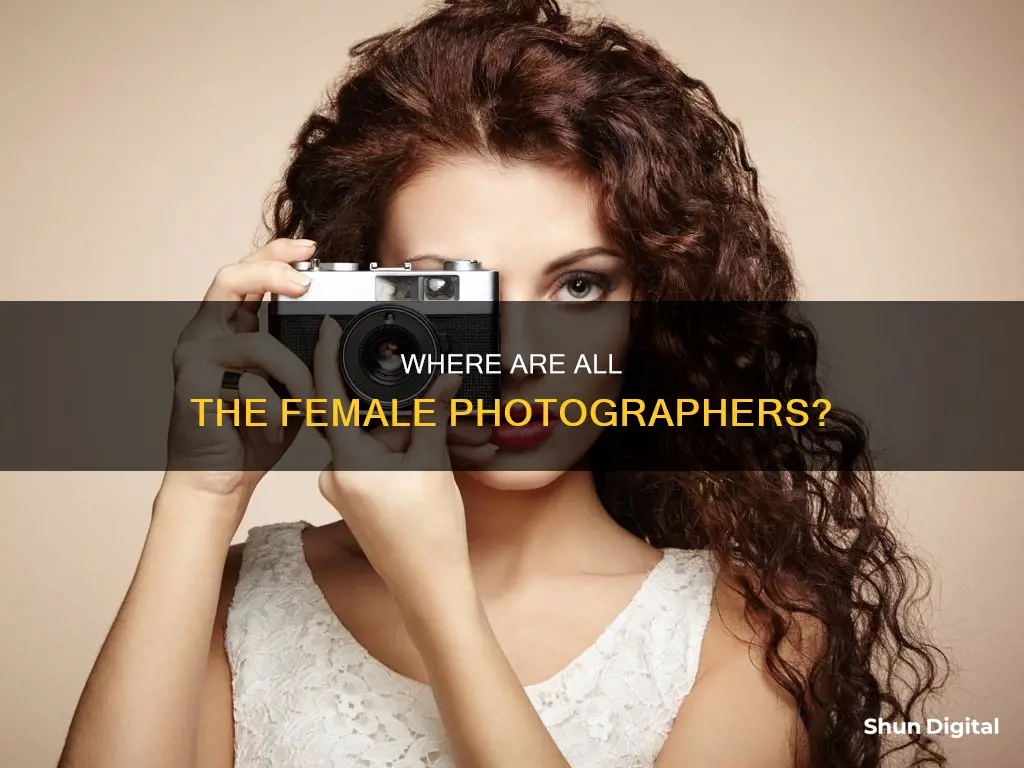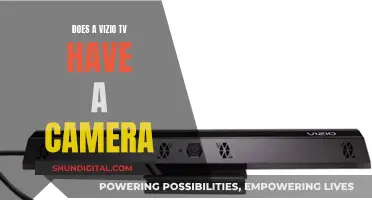
Women are severely underrepresented in the film industry, particularly in roles such as directors, producers, writers, cinematographers, and editors. Despite making up almost half of the world's population and a large portion of moviegoers, women are not provided the same opportunities as their male counterparts in Hollywood. This disparity is even more pronounced for women of color, who face additional barriers in the industry. Various factors contribute to this gender gap, including gender bias, discrimination, and a lack of diversity initiatives. While there have been some improvements and initiatives to address this issue, such as diversity agreements and female collectives, there is still a long way to go to achieve gender parity in the film industry.
What You'll Learn

Sexist attitudes and assumptions about women's capabilities and interests
The film industry has long been dominated by men, and this is reflected in the gender disparity among Academy Award winners. Women are rarely recognised for their achievements in cinematography, with Rachel Morrison being the first woman to be nominated for the Academy Award for cinematography for her work on Mudbound in 2018. Only one female director, Kathryn Bigelow, has won an Oscar, for The Hurt Locker in 2010.
This gender bias is also evident in the statistics. According to the Center for the Study of Women in Television and Film, of the top 100 highest-grossing films of 2017, only 8% were directed by women, 10% were written by women, 24% were produced by women, and 14% were edited by women.
This disparity is not due to a lack of interest or talent among women, but rather, it is a result of sexist attitudes and assumptions about women's capabilities and interests. Women in film, television, and digital video often feel like the odds are stacked against them due to the male-dominated nature of the industry.
Sexism and discrimination against women in the film industry can manifest in various ways, from being questioned about their competence to being assumed to be amateurs or students. Women are often pushed towards producing rather than hands-on jobs on set, reflecting outdated assumptions about their capabilities and interests.
Furthermore, women in film education often face challenges, with male students elbowing their way past female students to reach equipment first and being relegated to organisational tasks rather than creative roles. These experiences can deter women from pursuing careers in cinematography and reinforce the notion that the industry is a male-dominated space.
Despite some progress in recent years, the film industry still has a long way to go in addressing sexist attitudes and assumptions about women's capabilities and interests. It is crucial to recognise and address these issues to create a more inclusive and diverse environment that values the contributions of women.
Selecting the Right Camera for Your Skype Calls
You may want to see also

Lack of representation and mentorship for women in the field
Women have long been underrepresented in the film industry, facing barriers to entry and advancement. This is also true behind the camera, where key roles such as directors and cinematographers have been dominated by men. As a result, there is a lack of female representation and mentorship for women in the field.
The issue of underrepresentation is critical, as it leads to a lack of role models for young girls and perpetuates stereotypes about women. Despite recent progress, the percentage of female filmmakers remains low, with only a small percentage of top-grossing films being directed by women. This scarcity translates to fewer stories told from a woman's perspective and a lack of diversity on-screen and in industry perceptions.
Mentorship is crucial for addressing the lack of female representation in the film industry. Organisations like Women in Film (WIF) offer mentorship programs to help women form and nurture their professional relationships. Through these programs, mentees can gain a deeper understanding of the entertainment industry's business practices and culture while focusing their efforts and honing their skills.
The impact of mentorship is far-reaching, as it helps to level the playing field by providing women with access to networking and guidance from established leaders in the industry. Mentorship also empowers women to take advantage of the experiences of those who have come before them and fosters a sense of community and support.
Despite these efforts, women in the film industry still face challenges. The gender pay gap persists, and female actors and filmmakers are frequently paid less than their male counterparts for equivalent work. Harassment and discrimination are also common issues, affecting careers and personal well-being.
However, there are signs of progress and increasing opportunities for women in the field. Recent years have seen a push towards gender equality in film, with organisations like WIF advocating for parity and providing resources to support women filmmakers. This shift has slowly increased female representation, although significant disparities remain.
The future of women in film looks promising, with more female directors, producers, and writers breaking through the glass ceiling. Initiatives for gender parity are gaining momentum, and advancements in technology are levelling the playing field by providing women with new opportunities to showcase their talents. Mentorship programs are also playing a crucial role in nurturing upcoming female talent and guiding them towards success in the industry.
Understanding Motion Blur in Photography: Causes and Solutions
You may want to see also

Women are discouraged and bullied out of the camera department
Women are often discouraged and bullied out of the camera department. This is due to the prevalence of misogynistic attitudes and behaviours that exist within the industry. Women are often doubted, teased, and bullied, which creates an uncomfortable and unwelcoming environment for them.
For example, a female camera assistant shared that she almost turned down a job because a male member of the production department asked her, "Can you even carry heavy camera kit?" during pre-production. This comment was not only sexist but also assumed that she was incompetent and physically weak, which is not true. This incident illustrates how women in the camera department are often faced with sexist remarks and assumptions that question their abilities and competence.
Furthermore, women in the camera department may also encounter condescension and belittling behaviour from their male peers and strangers. For instance, a woman shared her experience of having a male stranger take her camera and ask if she was a student, implying that she was an amateur. These kinds of interactions can be discouraging and frustrating for women, making them feel like they are constantly fighting for their space in the industry.
In addition to these challenges, women in the camera department may also face indirect forms of bullying, such as being teased or persuaded to leave the department. This can happen gradually and insidiously through sexist remarks, jokes, and behaviours that contribute to a culture of misogyny. For example, referring to lamps as "redheads" or "blondes" is a subtle form of objectification that contributes to a larger pattern of misogynistic behaviour.
As a result of these experiences, some women may feel discouraged and choose to switch careers or move to different departments within the film industry. This is supported by the fact that, despite there being a much greater percentage of women working in stills photography, there is a significant gender disparity among cinematographers. This suggests that the attitudes and behaviours of crew members can significantly impact the representation of women in different departments.
To address this issue, it is important for everyone, especially men, to ensure that they are not contributing to this culture of misogyny. It is crucial to call out sexist behaviour and create comfortable and inclusive environments for women to work in the camera department.
Apple's Privacy Policy: Can They Access Your Camera?
You may want to see also

Misogynistic workplace cultures and behaviours
Women in the film industry face a myriad of challenges, from being sidelined into "hands-off" jobs to having their competence constantly questioned. This is exemplified by the fact that, as of 2018, only one female director has ever won an Oscar, and that year was the first time a woman had been nominated for the Academy Award for cinematography.
Sidelining and Stereotyping
Women are often pushed into specific roles, such as producing, and discouraged from pursuing hands-on jobs on set. This is a form of sidelining, where women are funnelled into certain roles and prevented from exploring others. This is often done under the guise of "protection" or "helpfulness", with women being told that certain roles are "not for them".
Questioning Competence
Women's competence is often called into question, with their skills and knowledge being doubted or ignored. This can take the form of strangers interfering with their work, as in the case of a man grabbing a female camera operator's equipment, or people assuming they are students or amateurs. This can cause women to question their own abilities and feel like they need to constantly prove themselves.
Lack of Representation
The lack of female representation in the film industry is stark, with only 8% of the top 100 grossing films of 2017 being directed by women, 10% written by women, 24% produced by women, and 14% edited by women. This lack of representation can make it difficult for women to break into the industry and foster a culture that does not value their contributions.
Exclusion and Isolation
Women often face exclusion and isolation in the film industry, being left out of group projects or not being invited to additional shoots. This can hinder their career development and leave them feeling isolated and unsupported.
Fighting for Space
Women in the film industry often find themselves having to fight for their space and constantly prove their worth. This can be exhausting and demotivating, leading some women to change their career paths or leave the industry altogether.
Lack of Support and Mentorship
The lack of female representation in the film industry also results in a lack of female mentors and role models for aspiring women filmmakers. This can make it difficult for women to find guidance and support, further hindering their career progression.
Microaggressions and Casual Sexism
Women in the film industry often face microaggressions and casual sexism, such as being asked if they are students or amateurs, or having their equipment grabbed by strangers. These seemingly small actions can have a cumulative negative impact, creating a hostile and exclusionary work environment.
Lack of Recognition and Awards
Despite their talent and contributions, women in the film industry often go unrecognized and unrewarded. This is evident in the low number of awards given to female directors and cinematographers, with only one female director having won an Oscar as of 2018. This lack of recognition can make it difficult for women to advance in their careers and gain the respect of their peers.
ADT Surveillance Camera Range: How Far Can They See?
You may want to see also

Union membership requirements and costs
Union membership can offer a range of benefits to camera workers, including higher salaries, better working conditions, health insurance, and retirement savings plans. There are two main unions that camera workers can join: the International Cinematographers Guild (Local 600) and the International Alliance of Theatrical Stage Employees (IATSE). Both unions have specific requirements for membership, which typically include a minimum number of paid workdays in a relevant classification, such as camera operator or cinematographer.
International Cinematographers Guild (Local 600)
To join the International Cinematographers Guild, you must meet the experience requirements and pay a one-time initiation fee. The specific requirements vary depending on the region, but generally, you must have either 100 paid days of work on non-union projects within one classification over a 3-year period or 30 paid days of work on union projects within one classification over a 1-year period. The initiation fee for Local 600 typically starts at around $5,000 and can go up to $15,000, depending on your job description.
International Alliance of Theatrical Stage Employees (IATSE)
IATSE is the largest entertainment industry union, with 340 local unions representing specific regions or subsets of the industry. The membership requirements vary by local union, but it generally includes similar experience requirements to Local 600. IATSE also offers a range of benefits to its members, including representation, contract negotiation, and the protection of employees' rights.
Costs of Union Membership
The cost of union membership can vary depending on the specific union and your job description. However, it typically includes an initiation fee, which can range from $5,000 to $15,000, as well as ongoing union dues, which are typically a percentage of your salary. Union members may also have access to additional benefits, such as health insurance and retirement plans, which can further impact the overall cost of membership.
Mastering the Oculus Rift S: Seeing Through the Camera
You may want to see also
Frequently asked questions
There are several reasons why there are fewer women in camera departments. Firstly, systemic discrimination and gender bias within the industry create barriers for women trying to enter and advance in the field. Secondly, the perception that "women just aren't interested in that techie stuff" persists, despite evidence to the contrary. For example, a higher percentage of women work in stills photography. Thirdly, women in camera departments may face misogynistic remarks, assumptions, and behaviours that create a hostile work environment and discourage them from pursuing careers in cinematography. Additionally, there is a lack of representation and recognition for female cinematographers, which can make it difficult for them to gain experience and be hired for prominent roles.
Women in camera departments often face stereotypes and assumptions about their abilities and interests in technology. They may be questioned about their competence, treated as amateurs, or have their equipment touched without their consent. Additionally, they may be subjected to misogynistic remarks, doubts, or bullying by their male colleagues, creating an uncomfortable work environment.
To address the lack of camera women, it is important to create an inclusive and welcoming work environment that values and respects women. This includes calling out misogynistic behaviour and ensuring that hiring processes are fair and equitable. Additionally, increasing representation and recognition of female cinematographers can help to dispel stereotypes and showcase their talent and skills. Mentorship and support programmes can also help encourage and support women pursuing careers in cinematography.







